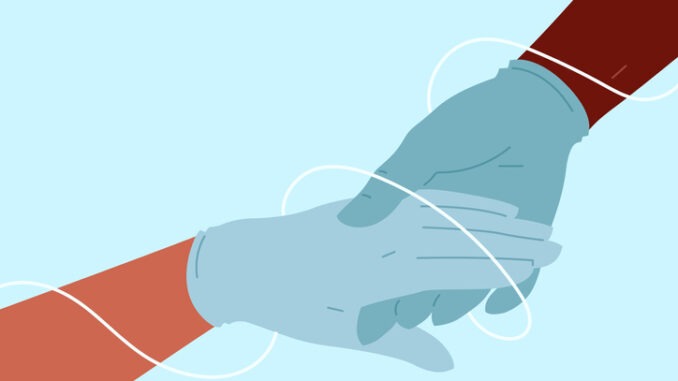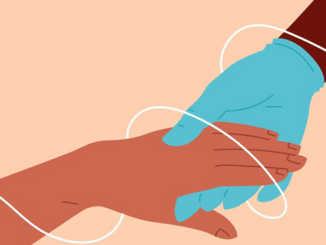
As the NHS Find and Treat mobile health service delivers lifesaving healthcare on the go, how can this be implemented by healthcare providers across the UK?
CREDIT: This is an edited version of an article that originally appeared on Digital NHS
Mobile units equipped by NHS Digital are helping a unique service in London to protect some of the most vulnerable people in our society from TB, HIV and hepatitis. Ousainou Sarr’s life was changed by NHS ‘Find and Treat’, a mobile health service that uses modern wireless connectivity to transform access to healthcare.
“I had been very ill with tuberculosis, but I didn’t know that,” Ousainou says. “I ended up on the street. Find and Treat found me on my second night out and tested me for TB.” That was in 2011. A year later, free of TB after treatment, he volunteered to help people who had also found themselves homeless and ill. Now, in 2022, he is employed as an outreach worker by the service that saved him.
Find and Treat, which operates out of University College London Hospitals (UCLH), targets groups at high risk of TB and other blood-borne viruses, like HIV and hepatitis, but who don’t get access to the healthcare they need. The main focus is on people who are homeless. “A disease like tuberculosis is almost perfectly masked by the lifestyle factors that go along with rough sleeping,” explains Professor Alistair Story, Find and Treat clinical lead at UCLH. “We need to take diagnostics we can interpret real-time.”
A key piece of kit is Find and Treat’s mobile x-ray unit, which mostly travels around London, the epicentre of TB in the UK, taking chest x-rays and sputum samples. New technology, installed courtesy of NHS Digital’s Future Wireless project, has transformed the unit’s connectivity while on the streets, allowing it to reach and help even more vulnerable people.
Choosing the best connection
The refurbished x-ray van – which is now electric rather than diesel-powered – has a multitude of connections, including a router holding multiple 4G and 5G ‘unsteered’ SIMs, and satellite as a back-up for poor coverage areas. This means the tech automatically chooses between all possible connections in order to use the best signal – leaving the crew free to focus on the people they’re helping.
Brendan Scott, the UCLH operations manager for Find and Treat, joined the service when it was set up in 2005 as the driver of the first-generation mobile unit. “Back then, we had a digital camera and just a radiographer and me. This refurbishment hasn’t changed what we do in the sense of how we book in patients, and process and report the imaging, but the service user and staff experience has been improved probably threefold.
“The technology allows us to process patient data extremely fast and get it to the right people, at the point of capture. If our radiographers pick up a suspect x-ray we can send it to a physician, A&E or chest clinic in real time.”
Adrian Noctor is a Find and Treat outreach worker who also has personal experience of homelessness. He says the new technology allows a crew – normally three or four people on the mobile x-ray unit, and two or three on the smaller blood-borne virus van – to reach more people. “There’s always someone like me, knocking on doors, getting people to come out to the van.
“We will visit homeless hostels, soup kitchens, day centres and immigration assessment locations. We look for anyone classed as a vulnerable adult. The two vans work together as often as possible. If you want to get someone out of their room, and you’ve got five checks on offer, they might think ‘I’ll do one’ – but, once you’ve got them downstairs, they’ll probably do two or three.”
Patrick Clark, director of infrastructure services at NHS Digital and the Future Wireless project lead, says Find and Treat is a great example of how new technology can help the NHS achieve its core purpose – providing comprehensive healthcare, available to all. “The multiple wireless connectivity options on board UCLH’s new, high-tech, Find and Treat mobile unit are enabling sophisticated digital solutions to be used to help vulnerable patients get diagnoses quickly and easily without needing to visit a hospital,” he says. “Because the team can x-ray, diagnose, and refer on board, people are far more likely to get timely treatment and the spread of the disease is reduced.”
“Good connectivity is foundational to the digital transformation of healthcare; you can’t do any of this without it – but with the technologies already available, and those that are emerging, it is a complex landscape. We have to help the NHS understand what the options are, and which technologies work best for which care settings and scenarios.”
Just the beginning
These sorts of mobile services are just the beginning; in order to realise the full potential of wireless connectivity, 5G and the satellite technology need to move on at pace. “Augmented reality and AI eat a lot of bandwidth,” says Patrick, “and, in health, you can’t do things by half. We’ve every reason to be excited about the potential for clinicians treating patients while out-and-about, but it only works if you have good connectivity.”
Meanwhile, the success of the trial with NHS Digital has prompted Find and Treat to think about expanding its service. “We’re taking what we’ve learned from the technology of the main unit and will embed some of that into a smaller clinic to take samples for TB and blood-borne viruses,” says Brendan Scott. “We can go down the embankments and under the bridges, where we know homeless people are, and still have the excellent communication to get that information back to the same centres as the main unit.”
Outreach worker Ousainou says every step the service can take beyond the bricks and mortar limitations of traditional NHS provision will save lives. “I think, without the van, I wouldn’t be here talking to you, quite honestly.”


Be the first to comment